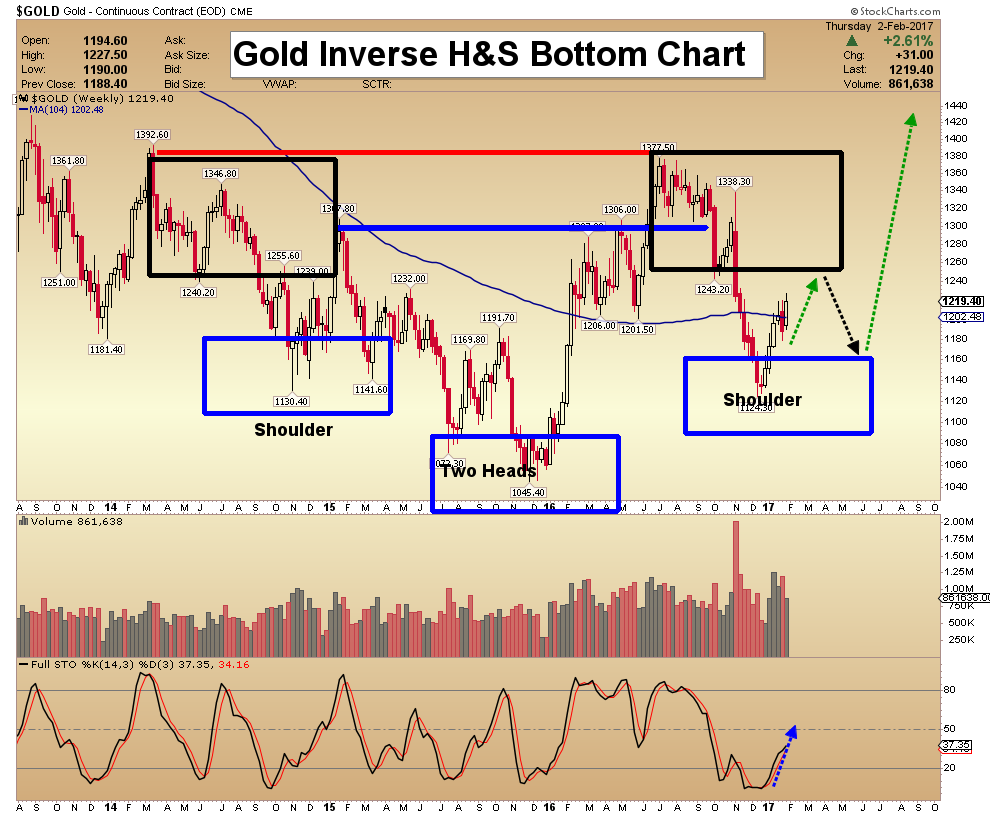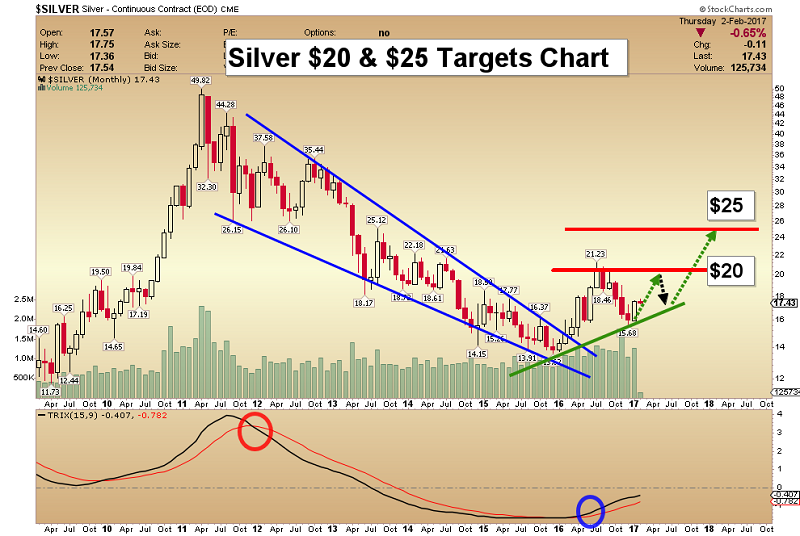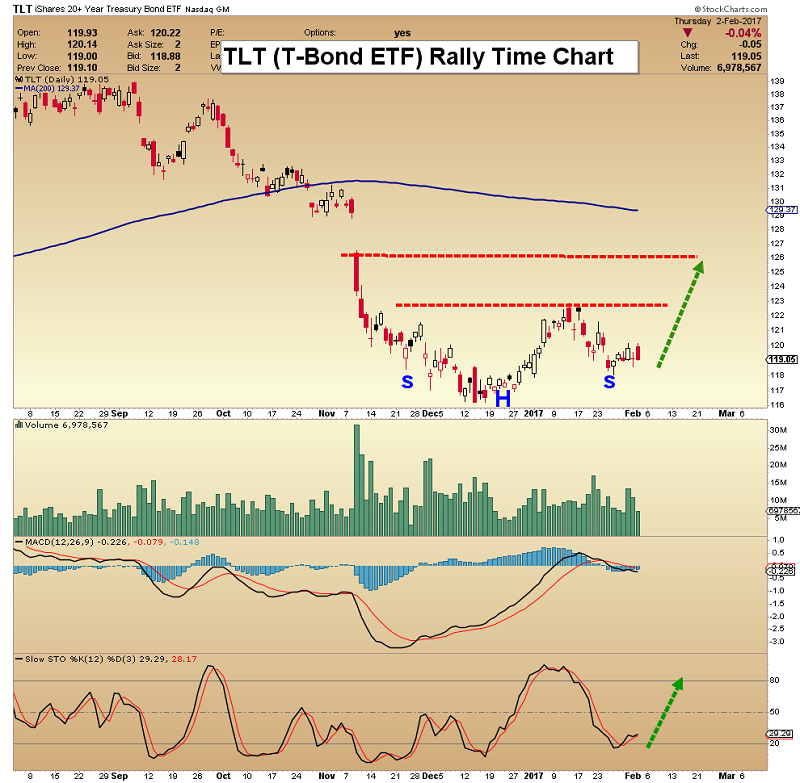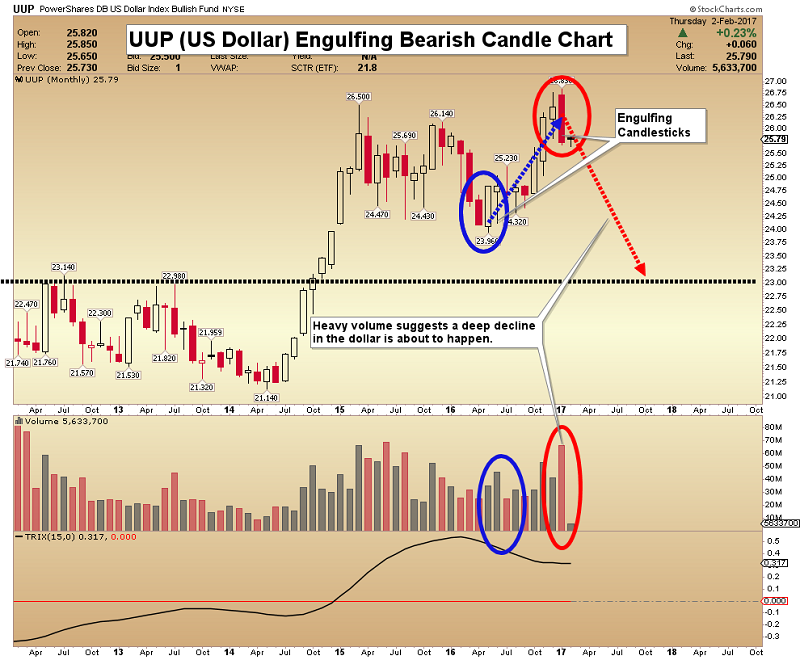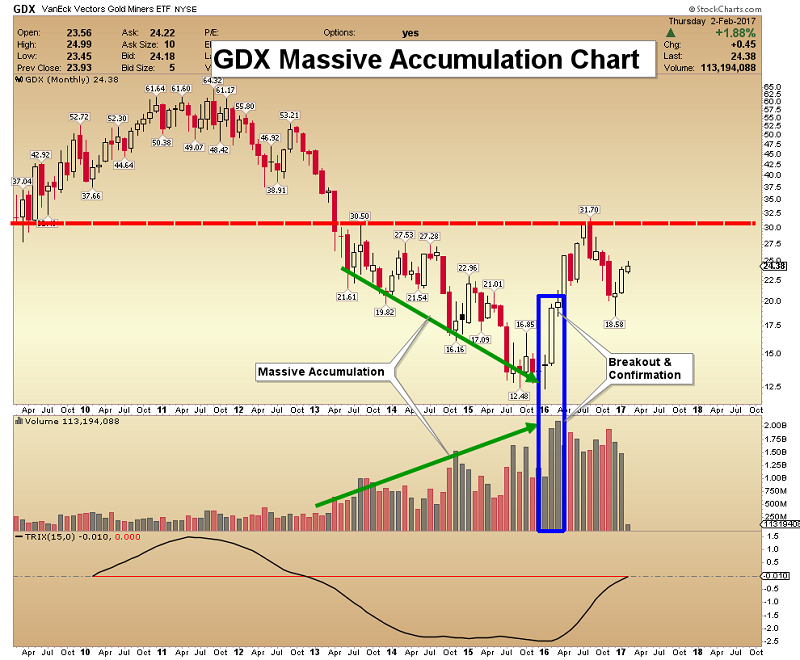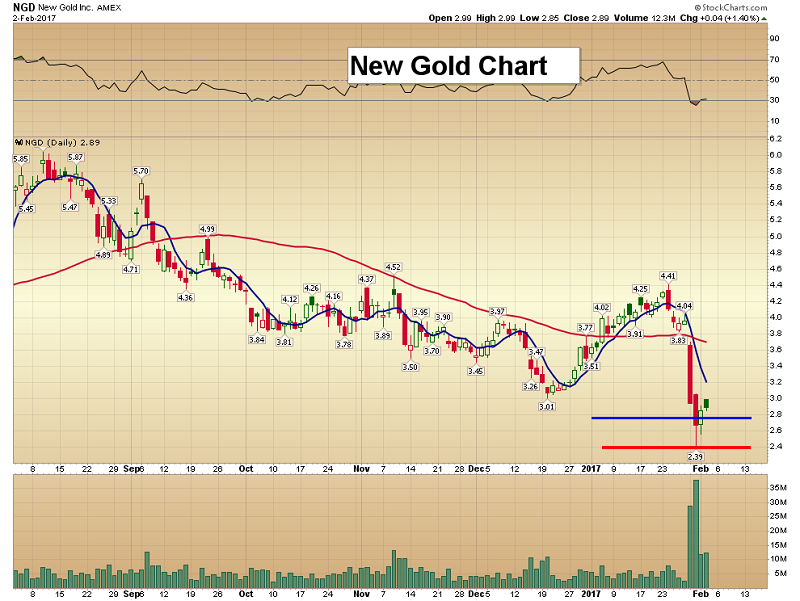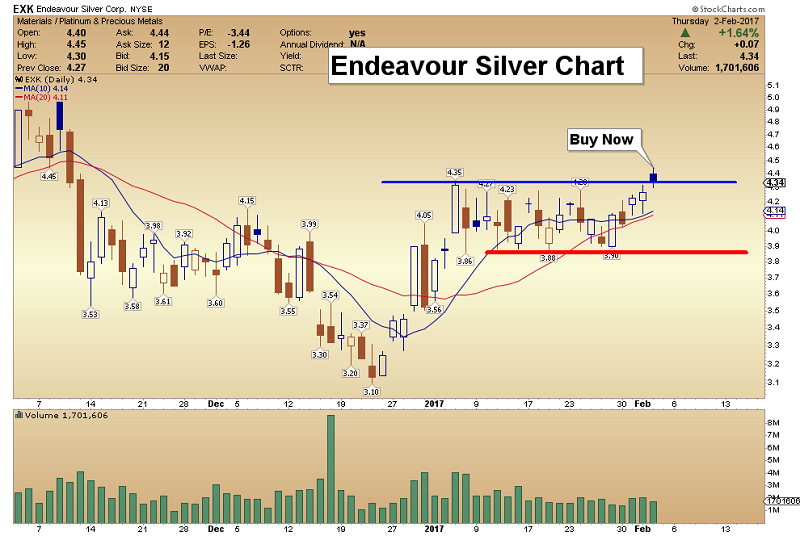Asset protection
Here are today’s videos and charts (double-click to enlarge):
Gold, Silver, US Dollar, & T-Bonds Video Analysis
SFS Key Charts & Tactics Video Analysis
SF60 Key Charts & Tactics Video Analysis
SF Juniors Key Charts Video Analysis
********
Unique Introduction For Gold-Eagle Readers: Send me an emailtoalerts@superforcesignals.com and I’ll send you 3 of my next
Super Force Surge Signals free of charge, as I send them to paid subscribers. Thank you!
Stay alert for our Super Force alerts, sent by email to subscribers, for both the daily charts on Super Force Signals at www.superforcesignals.com and for the 60 minute charts at www.superforce60.com
About Super Force Signals:
Our Super Force signals are created thru our proprietary blend of the highest quality technical analysis and many years of successful business building. We are two business owners with excellent synergy. We understand risk and reward. Our subscribers are generally successful business owners, people like yourself with speculative funds, looking for serious management of your risk and reward in the market.
Frank Johnson: Executive Editor, Macro Risk Manager.
Morris Hubbartt: Chief Market Analyst, Trading Risk Specialist.
Email:
trading@superforcesignals.com
trading@superforce60.com
Mail:
SFS Web Services
1170 Bay Street, Suite #143

Here’s a sobering thought: In the first month of 2017, we find ourselves closer to nuclear Armageddon than at any time in the last sixty years!
The Doomsday Clock, started by a group of scientists after the Manhattan Project back in 1947, is updated each January to show how close or how far away we are from the stroke of midnight, which means imminent nuclear holocaust.
Well, according to the latest report from the Bulletin of the Atomic Scientists in January, the clock just moved to two-and-one-half minutes till midnight.
That’s closer to nuclear annihilation than any time since 1953 … immediately after the first H-bomb test by the Soviet Union.
This revelation is no surprise to me, because I’ve been warning you for some time now that the cycles of war are indeed ramping higher, and will continue to do so in the years ahead.
The war cycles are just one component in an intersection of multiple cycles I call the Edelson Wave, that are now converging into the most powerful tidal-wave of economic and political upheaval in more than eighty years.
All around me I see hard evidence that the war cycles are rising. Just look at the short-list of flash points for potential conflict around the world today …
- North Korea’s development of nukes and missiles to carry them…
- Hot war in Syria and rising tensions across the Middle East …
- Russia’s ambitions to restore the lost Soviet empire …
- China’s saber rattling in the South China Sea
The list goes on, and could easily include rising tensions between India and Pakistan, both nuclear-armed states, not to mention threats by Israel, Turkey and Saudi Arabia to intervene in the Syrian conflict.
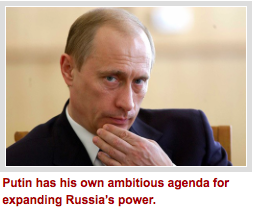 Against this backdrop, we have a changing cast of world-leading characters with very strong personalities. Of course, this includes a new American president who enjoys talking tough and doesn’t seem hesitant to swing the big stick of U.S. military might.
Against this backdrop, we have a changing cast of world-leading characters with very strong personalities. Of course, this includes a new American president who enjoys talking tough and doesn’t seem hesitant to swing the big stick of U.S. military might.
And in the opposite corner is Russian President Vladimir Putin, who for all his friendly gestures toward Trump, has his own ambitious agenda for expanding Russia’s power.
Trump has promised to improve relations with Russia, but don’t let that lull you into a false sense of security.
Putin is dead set on restoring Russia’s former glory, by force if necessary. He has systematically flexed his military muscle to show his willingness to re-acquire former client states of the old Soviet Union. Remember Crimea? Remember Ukraine? Remember Georgia?
And he also has designs on the Baltic states of Latvia, Estonia, and Lithuania. Two of those Baltic nations share a border with Russia, and all three are now NATO members with NATO troops garrisoned on Russia’s front doorstep. This region is on the exact same warpath into Russia followed by Napoleon’s France, and later by Germany during two world wars, making it key strategic territory in Putin’s eyes.
Russia is also a major backer of the Assad regime in Syria, which sets him at odds with both Israel and Turkey, two other NATO members. Make no mistake, the stakes here could not be any higher, and here’s where the Doomsday Clock comes into play.
Reportedly, the Russians have already warned both Turkey and Israel that Putin is prepared to use tactical nuclear weapons if necessary to safeguard the more than 20,000 advisers and troops now operating in Syria.
Both Turkey and Israel are NATO members, meaning any conflict over Syria could quickly escalate into full-scale nuclear war.
And that’s just one of multiple major flashpoints.
President Trump has also promised to punish China for predatory trade practices and currency manipulation. Trump’s choice for secretary of state, Rex Tillerson, commenting on tensions in the South China Sea, went on record saying: “We’re going to send China a clear signal that … island-building stops and access to those islands is not going to be allowed.”
Bottom line: Not since the darkest days of the Cold War has America faced the possibility of major conflicts on multiple fronts. Regrettably, the Doomsday Clock is ticking closer to midnight, just as my own studies of the war cycles forewarned.
Best wishes,
Larry
….also: Is The Public About To Get Torched In A Stock Market Plunge? The Answer Will Shock You
P.S. The Dow is going to soar as high as 45,000 … NOT in spite of the struggling world economy or gargantuan federal debts … NOT in spite of gridlock in Washington and the uncertainty of the Trump presidency … NOT in spite of the mess in Europe and Japan and the rising tide of political violence and terror worldwide … NOT in spite of the new U.S. president and his radical shift from the economic policies of the past eight years … The Dow Will go as high as 45,000 – NOT in spite of all these crises in the global economy … but BECAUSE of them! Read more here …

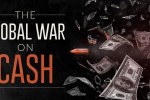 There is a global push by lawmakers to eliminate the use of physical cash around the world. This movement is often referred to as “The War on Cash”, and there are three major players involved:
There is a global push by lawmakers to eliminate the use of physical cash around the world. This movement is often referred to as “The War on Cash”, and there are three major players involved:
1. The Initiators
Who?
Governments, central banks.
Why?
The elimination of cash will make it easier to track all types of transactions – including those made by criminals.
2. The Enemy
Who?
Criminals, terrorists
Why?
Large denominations of bank notes make illegal transactions easier to perform, and increase anonymity.
3. The Crossfire
Who?
Citizens
Why?
The coercive elimination of physical cash will have potential repercussions on the economy and social liberties.
Is Cash Still King?
Cash has always been king – but starting in the late 1990s, the convenience of new technologies have helped make non-cash transactions to become more viable:
- Online banking
- Smartphones
- Payment technologies
- Encryption
By 2015, there were 426 billion cashless transactions worldwide – a 50% increase from five years before.
| Year | # of cashless transactions |
|---|---|
| 2010 | 285.2 billion |
| 2015 | 426.3 billion |
And today, there are multiple ways to pay digitally, including:
- Online banking (Visa, Mastercard, Interac)
- Smartphones (Apple Pay)
- Intermediaries ( Paypal , Square)
- Cryptocurrencies (Bitcoin)
The First Shots Fired
The success of these new technologies have prompted lawmakers to posit that all transactions should now be digital.
Here is their case for a cashless society:
Removing high denominations of bills from circulation makes it harder for terrorists, drug dealers, money launderers, and tax evaders.
- $1 million in $100 bills weighs only one kilogram (2.2 lbs).
- Criminals move $2 trillion per year around the world each year.
- The U.S. $100 bill is the most popular note in the world, with 10 billion of them in circulation.
This also gives regulators more control over the economy.
- More traceable money means higher tax revenues.
- It means there is a third-party for all transactions.
- Central banks can dictate interest rates that encourage (or discourage) spending to try to manage inflation. This includes ZIRP or NIRP policies.
Cashless transactions are faster and more efficient.
- Banks would incur less costs by not having to handle cash.
- It also makes compliance and reporting easier.
- The “burden” of cash can be up to 1.5% of GDP, according to some experts.
But for this to be possible, they say that cash – especially large denomination bills – must be eliminated. After all, cash is still used for about 85% of all transactions worldwide.
A Declaration of War
Governments and central banks have moved swiftly in dozens of countries to start eliminating cash.
Some key examples of this? Australia, Singapore, Venezuela, the U.S., and the European Central Bank have all eliminated (or have proposed to eliminate) high denomination notes. Other countries like France, Sweden and Greece have targeted adding restrictions on the size of cash transactions, reducing the amount of ATMs in the countryside, or limiting the amount of cash that can be held outside of the banking system. Finally, some countries have taken things a full step further – South Korea aims to eliminate paper currency in its entirety by 2020.
But right now, the “War on Cash” can’t be mentioned without invoking images of day-long lineups in India. In November 2016, Indian Prime Minister Narendra Modi demonetized 500 and 1000 rupee notes, eliminating 86% of the country’s notes overnight. While Indians could theoretically exchange 500 and 1,000 rupee notes for higher denominations, it was only up to a limit of 4,000 rupees per person. Sums above that had to be routed through a bank account in a country where only 50% of Indians have such access.
The Hindu has reported that there have now been 112 reported deaths associated with the Indian demonetization. Some people have committed suicide, but most deaths come from elderly people waiting in bank queues for hours or days to exchange money.
Caught in the Crossfire
The shots fired by governments to fight its war on cash may have several unintended casualties:
1. Privacy
- Cashless transactions would always include some intermediary or third-party.
- Increased government access to personal transactions and records.
- Certain types of transactions (gambling, etc.) could be barred or frozen by governments.
- Decentralized cryptocurrency could be an alternative for such transactions
2. Savings
- Savers could no longer have the individual freedom to store wealth “outside” of the system.
- Eliminating cash makes negative interest rates (NIRP) a feasible option for policymakers.
- A cashless society also means all savers would be “on the hook” for bank bail-in scenarios.
- Savers would have limited abilities to react to extreme monetary events like deflation or inflation.
3. Human Rights
- Rapid demonetization has violated people’s rights to life and food.
- In India, removing the 500 and 1,000 rupee notes has caused multiple human tragedies, including patients being denied treatment and people not being able to afford food.
- Demonetization also hurts people and small businesses that make their livelihoods in the informal sectors of the economy.
4. Cybersecurity
- With all wealth stored digitally, the potential risk and impact of cybercrime increases.
- Hacking or identity theft could destroy people’s entire life savings.
- The cost of online data breaches is already expected to reach $2.1 trillion by 2019, according to Juniper Research
As the War on Cash accelerates, many shots will be fired. The question is: who will take the majority of the damage?

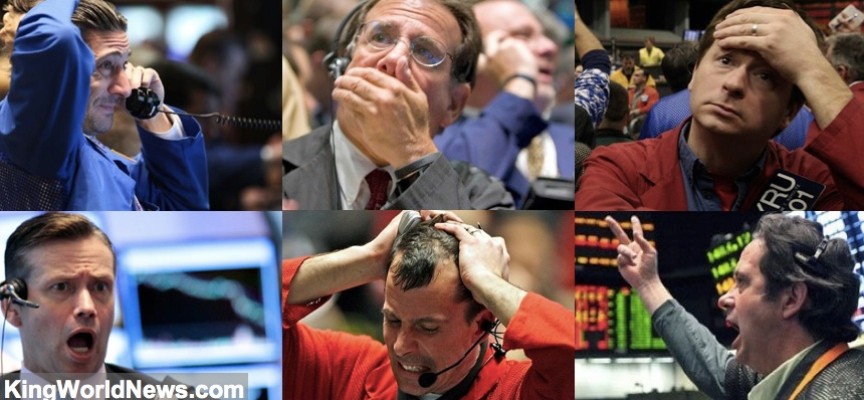 The latest readings from the weekly American Association of Individual Investors survey show a drop in bullish opinion among mostly self-directed investors. At the same time, “everyone else” remains steadfastly, and extremely, bullish. While individuals are looked down upon as the dumb money, that has not been an accurate statement, especially over the past decade…
The latest readings from the weekly American Association of Individual Investors survey show a drop in bullish opinion among mostly self-directed investors. At the same time, “everyone else” remains steadfastly, and extremely, bullish. While individuals are looked down upon as the dumb money, that has not been an accurate statement, especially over the past decade…


“Donald Trump slays all dragons: mainstream media, leftists and doubters!”
“Donald Trump is the cause of all evils real and imagined, past, present and future!”
The first headline is partly real and timely, the second is my paraphrasing the recent coverage from supportive media outlets. The last one is from every other media outlet, including the CBC…your income tax dollars at work!
I’m starting with these three “headlines” because they illustrate both the spirit of the current environment, and the risks of our media-pervasive modern society. All of this noise is a big distraction from the real action, and it’s very dangerous. Times like these remind us that “mass media mimics – and sometimes manipulates – mass mania.” For some, the mania is a victory parade, and for others it’s a lynch-mob delicately described as a “march” with vulgar hats.
Here’s why you should care: when we are in a highly emotional state, we ALL make emotionally-based decisions; this extends to investment decision making as well. No one is immune to good or bad emotions, and we cannot mask or restrain negative/destructive emotions without doing the same to positive/constructive emotions. For curious minds, please look up Brene Brown’s various TED Talks.
Too much optimism is dangerous, especially if it’s connected to a story, person or movement that we identify with passionately; call it attachment of our ego. Don’t get me wrong, I’m happy that Hillary Clinton didn’t win the Whitehouse, but this isn’t about Donald Trump…despite the fact that he’s showing himself to be a man of swift action, and appears to be following through on his major campaign promises.
This aspect alone has opposing pundits in awe, bewildered, whining and enraged. Thus, Trump supporters are highly likely to be the most at-risk here in terms of buying near a short-term top since their political exuberance is masking their “higher-order executive functions” that produce disciplined investment decision making. While the MSM attacks him on every issue (petty and material), his supporters are growing emotional blinders via over-confidence. Go ahead and enjoy the victory parade, but be smart about it, please.
Why the wet blanket language? Since risk and reward are directly connected to price movements in the medium of time, we know from history that true investment risk is lowest when prices are lowest (and fear of loss of capital is highest) and conversely that risk is highest when prices are highest.
Most describe the emotion of market tops as “Greed” but that’s a misnomer; I believe what most investors feel near market tops (especially at new all-time highs) is actually fear of missing out on gains. This fear of missing out is exacerbated for those who sold near the last bottom based on fear of loss of capital…and they repeat their destructive behaviours of selling low and buying high.
Regardless of who’s in political power, it’s the underlying economic trends that matter. Money is a form of energy, and we know that energy moves in waves and cycles in a dynamic and complex inter-play. This is the entire basis of Martin Armstrong’s ECM and Socrates™ computer models, which remove human emotion, bias and opinion from the mix. The mainstream chatter is a dangerous distraction from the underlying reality, so we need to focus on the data.
What’s happening right now with currency, equity and government bond markets and US-bound capital flows has been forecasted in Marty’s models for many years, long before Donald Trump announced his campaign in the summer of 2015. Donald J. Trump is merely the lead actor is this grand screenplay of energy flows.
So, whether you’re sitting on a lump sum that is “missing out” on recent gains, or fully invested and wondering about de-risking your portfolio, this is the time to go back to your carefully crafted Investment Policy Statement that you agreed to when your emotions were in a more subdued state, and your decision making was dominated by your higher-order executive functions. This is the time to return to your fundamentals, to your Life Goals; and to re-affirm your commitment to making intelligent investment decisions…not emotional decisions.
Patience and Discipline are accretive to your wealth, health and happiness – so focus on these.
I’m looking forward to participating in The World Outlook Financial Conference next week, including presenting a couple of Personal Finance Workshops on investing lump sums and other timely topics.
Cheers,
Andrew H. Ruhland, CFP, CIM


